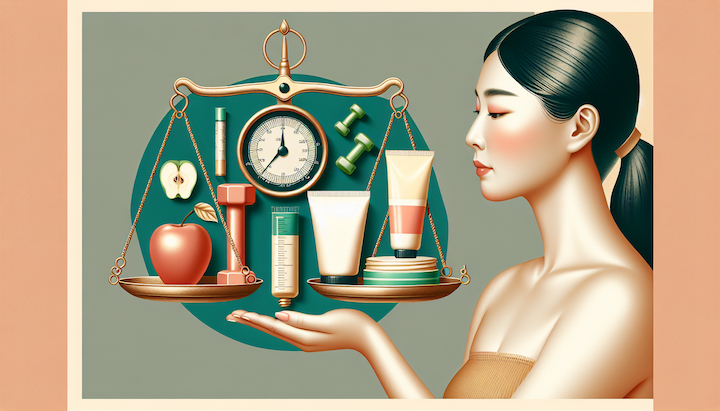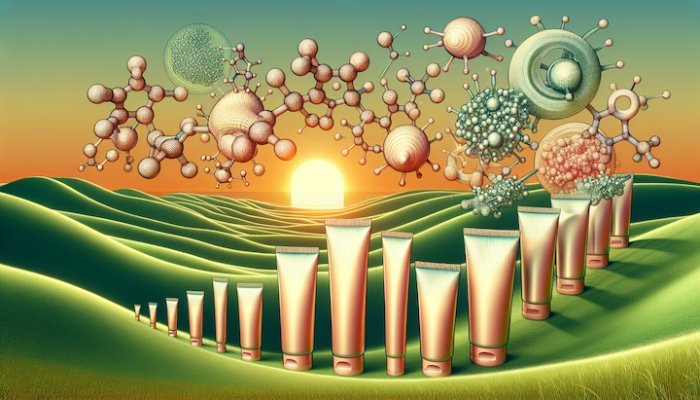Breast tenderness
Also referred to as mastodynia, mastalgia or mammalgia, breast tenderness occurs in 50% to 80% of women sometime in their life. But in only 1% of patients with mastalgia is it a symptom of breast cancer. It more often than not occurs during the last few days before bleeding.
It can occur in the early days of Pregnancy, when breast feeding, as the breasts are swollen with milk, and if on HRT or Contraceptives.
Breast pain can also occur in teenage boys going through puberty. And in men too, particularly if they are on anti-androgen therapy for prostate cancer. See Man Boobs.
The breasts become inflamed and/or swollen with water, often accompanied by Cysts. These are known as fibrocystic breasts or fibroadenoma. Although the cysts themselves are benign, many women fear breast cancer when they occur. But breast pain is not a common symptom of cancer.
Mastitis is inflammation of the breast. It's more commonly associated with a blocked milk duct when breastfeeding or engorgement due to milk. But can be caused by S. aureus, the most common pathogen, plus S. epidermidis and some streptococci. Although this is rare unless conditions are unhygienic.
In some women breast tenderness can be caused by hyper-secretion of prolactin. Although prolactin is regarded as the hormone of lactogenesis, ie causes milk to be produced, it does have inflammatory properties too. See here, here and here.
Excess oestrogen is one cause for the rise in prolactin levels. See here, here and here. It increases mitotic and secretory activity of several cells in the pituitary, but particularly the proliferation of prolactin cells. See here and here.
Stress also causes hyper-secretion of prolactin, as stress drops dopamine levels sharply. See here and here. Dopamine suppresses prolactin production if levels are sufficiently high. See here, here and here.
Oestrogen peaks during the mid-luteal phase, progesterone normally does too. But in some women the corpus luteum secretes insufficient progesterone, thus making oestrogen the dominant hormone when progesterone should be.
Oestrogen is also an inflammatory hormone. See here, here, here and here.Thus excess oestrogen in ratio to progesterone causes untold problems in women, one of which is breast tenderness.
Breast tenderness can be caused by a lack of iodine, an often overlooked but easily remedied problem. Iodine deficiency was thought to be a thing of the past, but it's again increasing.
An easy way to find out if the level is low is to get a tincture of iodine. Put 3 drops anywhere on the inner arm, rubbing them in with the dropper. If the patch fades in a few hours it means there's a deficiency. Continue applying it until the patch takes days to fade. Alternatively have a blood test.
Ironically a lack of iodine, and selenium too, can increase the risk of breast cancer. See here.
Certain drugs can cause breast tenderness...
- digitalis
- aldomet
- spironolactone
- anadrol
- chlorpromazine
- oxymetholone (an anabolic steroid)
Natural treatment
Progesterone is an anti-inflammatory hormone. It not only inhibits oestrogen induced mitosis and proliferation, but causes differentiation of the cells. It also inhibits prolactin production.
If swelling of the breast occurs, diuretics are often given. There is no better diuretic than progesterone, so good it's now given via IV transfusion for Traumatic Brain Injury, to prevent any oedema forming.
The amino acid L-tyrosine is the precursor to dopamine. Dopamine is synthesised in nervous tissue and in the adrenals from tyrosine. Noradrenaline and adrenaline are then synthesised from dopamine. These two, together with cortisol, make up the stress hormones. With a high level of stress dopamine levels will drop, due to rapid conversion to noradrenaline and adrenaline.
A lack of protein in the diet, in particular the amino acid tyrosine, slows down the production of dopamine. It's essential to keep dopamine and progesterone levels up to ensure prolactin remains low.
The amount of progesterone needed will be dependent on the individual and the severity of the problem. Women should use between 100-200mg/day of progesterone and men 10-100mg/day. In severe cases more might be needed, vary the amount used following symptoms as a guide. A progesterone cream is the most versatile means of using progesterone, as it can be applied directly to the breasts.
For more information see the page how to use progesterone cream.
Before using progesterone it's essential to read the page on Oestrogen dominance first.
It's essential to keep dopamine levels up to inhibit prolactin production. Adding more protein to the diet will assist. Alternatively take 250mg/day tyrosine in the morning. This requires vitamin B3 and folic acid for conversion, so take 100mg B3 and 300mcg folic acid. Gradually increase the tyrosine dose until the optimum is found. It is safe to go up to 6000mg/day. There's no need to increase the B vitamins.
Vitex agnus-castus extract reduces prolactin secretion from the pituitary gland.
Iodine should be considered too if low.
Conventional treatment
- Topical and systemic NSAIDs and analgesics
- birth control pills, although a known side effect of these is breast pain
- bromocriptine a dopamine agonist, which raises dopamine levels, so reducing prolactin levels, but it comes with many adverse side effects
- Danazol, a modified testosterone which inhibits oestrogen, but with virilising properties
- thyroid hormone supplements.
Website references...
 Struggling with weight gain or not being able to shed excess mass? If you have addressed your diet and exercise regime then you may want to look into the role hormones play in the arena of weight mana…
Struggling with weight gain or not being able to shed excess mass? If you have addressed your diet and exercise regime then you may want to look into the role hormones play in the arena of weight mana… Finding natural solutions to hormonal problems is a quest for many women worldwide. Organic progesterone creams emerge as a favoured choice offering a natural balance without the complications attache…
Finding natural solutions to hormonal problems is a quest for many women worldwide. Organic progesterone creams emerge as a favoured choice offering a natural balance without the complications attache… Navigating perimenopause, a period when progesterone becomes crucial for a woman’s well-being, can be quite challenging as one grapples with an array of symptoms. From the age of around 35, the produc…
Navigating perimenopause, a period when progesterone becomes crucial for a woman’s well-being, can be quite challenging as one grapples with an array of symptoms. From the age of around 35, the produc…